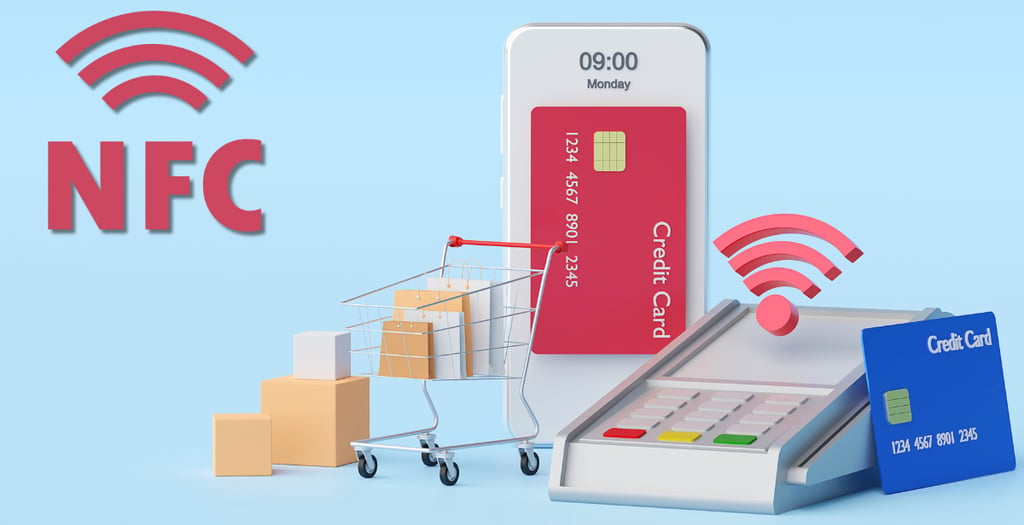We have a gift for you if you Subscribe to our email :)
NFC technology basics
Discover the fundamentals of NFC technology and its impact on our daily lives. This comprehensive guide explores what NFC is, how it works, and its key components. Learn about the common applications, from contactless payments to smart marketing, and delve into future trends in this rapidly evolving field. Perfect for tech enthusiasts and professionals, this article breaks down the essentials of NFC in an easy-to-understand manner, ensuring you're up-to-date with the latest advancements in wireless communication.
NFCTECHNOLOGYWIRELESS COMMUNICATION
NFC Philippines
6/11/20244 min read


NFC Technology Basics
NFC technology has become a part of our daily lives, often without us even noticing. From paying with a tap of your phone to accessing secure buildings, NFC is behind many convenient modern experiences. In this article, you will learn:
What NFC technology is and how it works.
Key components and standards that make NFC possible.
Common applications and future trends in NFC technology.
Let’s dive into the world of NFC and explore its fascinating aspects.
What is NFC Technology?
NFC, or Near Field Communication, is a set of communication protocols that enable two electronic devices to exchange data over short distances, typically less than 4 cm. It’s an offshoot of RFID (Radio Frequency Identification) technology but with some added features tailored for consumer use.
Think of NFC as a very short-range, secure way to share data. Unlike Bluetooth, which also supports wireless data transfer, NFC doesn't require device pairing, making it faster for quick interactions. For instance, when you use your phone to pay at a store, it’s NFC at work, making that transaction happen seamlessly.
Key Components of NFC Technology
NFC Chips and Antennas
At the heart of every NFC-enabled device is a tiny chip and antenna. The chip stores the data, while the antenna transmits it. These components are embedded in a variety of devices, from smartphones to credit cards and even smart posters.
Controllers and Software
NFC controllers manage the data exchanges and ensure that the communication between devices is secure and efficient. The software layer on top of this hardware allows developers to create applications that utilize NFC technology in innovative ways.
Modes of NFC Communication
NFC operates in three different modes:
Reader/Writer Mode: One device reads data from or writes data to another device. For example, your phone can read an NFC tag on a poster to get more information.
Peer-to-Peer Mode: Two devices exchange data, such as when you share contacts or photos between phones.
Card Emulation Mode: Your device acts like a contactless card, such as when you use your phone to make payments.
NFC Standards and Protocols
NFC technology is governed by several standards to ensure compatibility and security. The primary standards include ISO/IEC 14443 and ISO/IEC 18092, which define the technical specifications for communication and data exchange.
These standards ensure that NFC devices from different manufacturers can work together seamlessly. This interoperability is crucial, especially in applications like contactless payments, where reliability and security are paramount.
Common Uses and Applications of NFC
Contactless Payments
Perhaps the most well-known use of NFC is in contactless payments. Services like Apple Pay, Google Wallet, and Samsung Pay utilize NFC to enable quick and secure transactions. Just a tap of your phone, and you're done – no need to fumble with cash or cards.
I remember the first time I used NFC for payment at a coffee shop. I was running late for a meeting and had forgotten my wallet. Thankfully, I had my phone, and with a quick tap, I paid for my coffee and was on my way. That convenience sealed the deal for me on the power of NFC.
Access Control and Security
NFC is also widely used for access control. Whether it's entering your office building or unlocking a hotel room, NFC provides a secure and convenient way to manage access. These systems often use NFC-enabled cards or mobile apps to grant entry.
Data Exchange and Transfer
NFC makes sharing data between devices simple and quick. For instance, you can share contact information, photos, or links by just bringing two NFC-enabled devices close together. This peer-to-peer functionality is particularly useful for personal and business interactions alike.
Smart Posters and Marketing
Smart posters equipped with NFC tags can provide users with additional information or promotional content. By tapping their phone against the poster, users can instantly access websites, videos, or download apps. This interactive marketing strategy engages consumers in a new and innovative way.
Security and Privacy Considerations
Data Encryption
Security is a critical aspect of NFC technology. NFC communications can be encrypted to protect sensitive data from being intercepted. This is particularly important in applications like mobile payments, where personal and financial information is exchanged.
Secure Elements
Many NFC-enabled devices include a secure element, a dedicated hardware component that securely stores sensitive information and handles cryptographic operations. This ensures that even if a device is compromised, the secure element remains protected.
Future Trends and Developments in NFC
The future of NFC technology looks promising, with advancements and new applications continually emerging. As the Internet of Things (IoT) expands, NFC's role in connecting and interacting with smart devices will grow. Imagine a world where your phone can communicate with your fridge, your car, and even your clothes, all through NFC.
Moreover, innovations in NFC could lead to enhanced security features and more efficient communication protocols, making it an even more integral part of our daily lives.
Conclusion
In summary, NFC technology is a powerful tool that simplifies many aspects of our lives through secure and efficient data exchange. We've covered the basics of NFC, its key components and standards, and its common applications. As NFC continues to evolve, its impact on the Internet of Things and other emerging technologies will only increase.
Next, you might be interested in exploring the security measures in wireless communication to understand how technologies like NFC and Bluetooth protect your data. This deeper dive will give you a more comprehensive understanding of the wireless world we live in.
Contacts
CustomerSupport@nfcphilippines.com
(+63) 9399310603 SMS, WhatsApp, Viber.
Raya Garden Condominiums, Parañaque, Philippines


